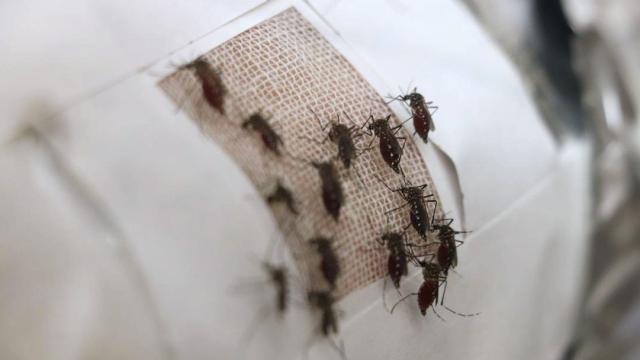Mosquitos aren’t just an itchy annoyance in summer, they can spread dangerous diseases and viruses. The good news is that researchers at Brown University might have come up with the perfect mosquito forcefield: garments lined with graphene.
If you’ve been avoiding any and all science news for the past decade and are unfamiliar with graphene, it’s a seemingly miraculous material made from a single layer of carbon atoms arranged in a two-dimensional hexagonal lattice. It’s lightweight but 100 times stronger than steel, and has been used in everything from wearable blood sugar monitoring patches, bike tires with adaptable grip, and even mind-melting optical illusions.
In a paper published Tuesday in the Proceedings of the National Academy of Sciences of the United States of America, researchers at Brown University in Providence, Rhode Island, detail how the graphene oxide-lined fabrics they had been developing to serve as a barrier against toxic chemicals also protected wearers from mosquito attacks in two different ways.
For starters, it was found that mosquitoes couldn’t generate enough force for their proboscis — which is the appendage they use to puncture the skin and withdraw blood — to actually penetrate the thin layer of graphene oxide. It acts as a sort of impenetrable force field to their attacks, but it actually works in both directions. Mosquitoes are able to pick up on chemical signals coming off your skin, alerting them to a nearby meal.
But when test subjects wore a thin layer of cheesecloth protected with the extra layer of graphene oxide, not only did mosquitoes not bite, they didn’t even land on the patches of exposed skin. So in theory, not only would you not have to worry about bites, while wearing a graphene oxide suit you wouldn’t even have to worry about mosquitoes annoyingly buzzing past your head.
You would, however, have to worry about rain. The graphene oxide material used in this study was an effective mosquito deterrent only when it was perfectly dry. When it got wet, its force field properties were all but diminished. To get around this, the researchers found that another form of graphene oxide with a reduced oxygen content was effective against mosquitoes when wet or dry, but changing the ingredients also meant the material was no longer breathable. In other words, you’d be safe against mosquitoes, but you’d also feel like you were wearing a sauna.
While this is big news for those who want to avoid pesky but innocuous mosquitos, it’s much bigger news from a global health perspective. The World Health Organisation estimates that “millions of deaths every year” are caused by mosquitos spreading a variety of diseases to humans.
The next step for the research team is to find a way to stabilise the regular graphene oxide protective layer so that it’s resilient against all conditions — wet or dry — while actually being comfortable to wear. If they can pull that off, they just might have created the holy grail of camping wear.
